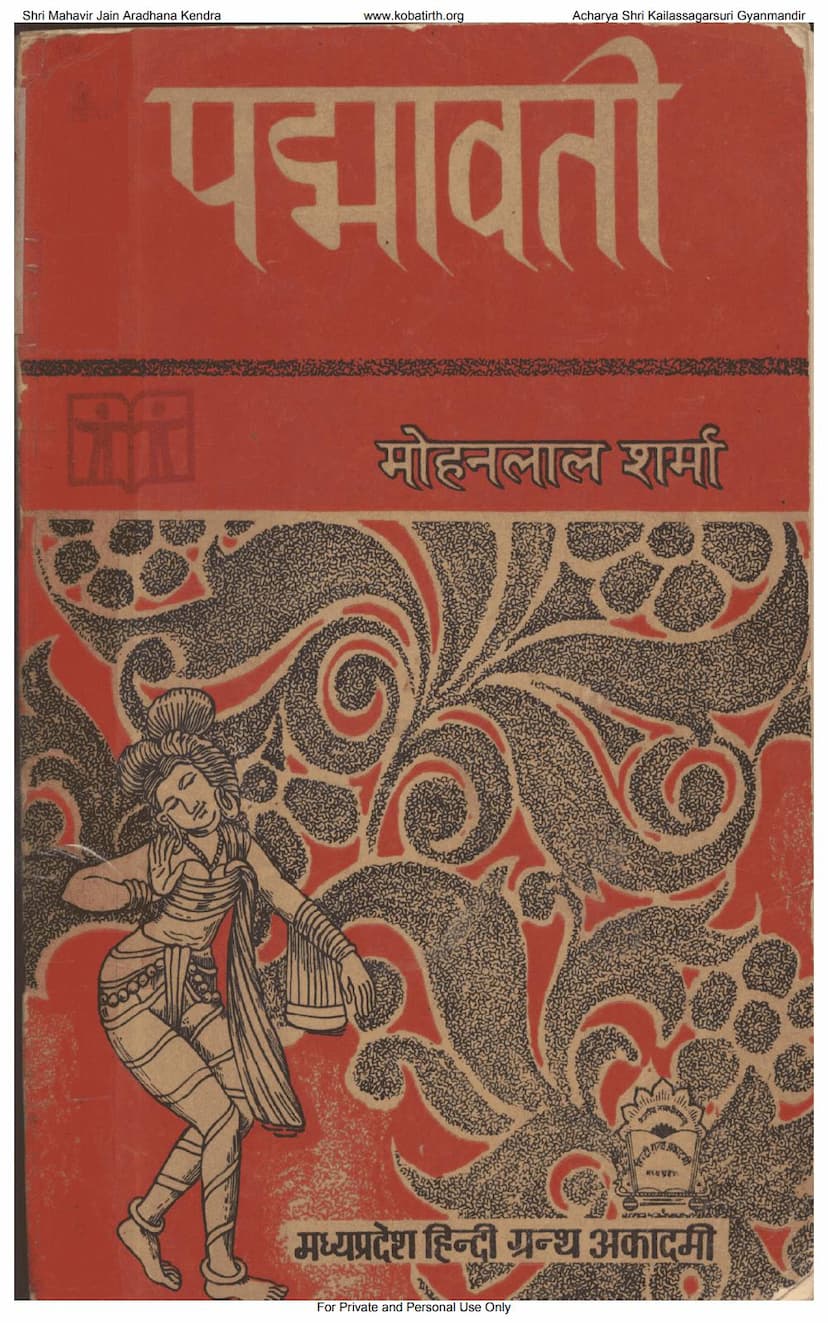Padmavati
Added to library: September 2, 2025

Summary
Here's a comprehensive summary of the Jain text "Padmavati" by Mohanlal Sharma, based on the provided pages:
Book Title: Padmavati Author: Mohanlal Sharma Publisher: Madhya Pradesh Hindi Granth Academy Publication Year: 1971
This book, published by the Madhya Pradesh Hindi Granth Academy under the University Text Book Scheme of the Ministry of Education, Government of India, is a detailed exploration of the ancient Indian city of Padmavati. The author, Dr. Mohanlal Sharma, has compiled historical, cultural, religious, and archaeological aspects of the city, drawing from various available sources.
Introduction and Purpose:
The publication of "Padmavati" is part of an initiative by the Madhya Pradesh Hindi Granth Academy to produce high-quality academic texts in Hindi to support education in the mother tongue. The book aims to provide comprehensive knowledge on Padmavati, a significant historical and cultural center of ancient India, which has been relatively less understood.
Historical Significance of Padmavati:
- Ancient and Renowned City: Padmavati was a highly famous city in ancient India, described by poets like Bhavabhuti as a city adorned with clear rivers, grand palaces, temples, and city gates. It was situated on the banks of the Sindhu and Para rivers, with a waterfall nearby.
- Literary Mentions: The city is mentioned in classical literature such as Bana's "Harshacharita" and Bhavabhuti's "Malati-Madhav," which highlight its grandeur and importance. Even the "Saraswati Kanthabharana" refers to a monastery near the Para river, in proximity to the Sindhu river, Phanipati forest, and a high mountain, indicating Padmavati's locale.
- Archaeological Evidence: A thousand-year-old inscription from Khajuraho further confirms Padmavati's prosperity during that period. Modern scholarly consensus, supported by excavations, identifies Padmavati with the present-day site of Pawaya, located about 13 miles from the Dabra railway station in the Gwalior region. Archaeological findings have yielded significant materials stored in the Gwalior Museum.
- Capital of the Nagas: Padmavati holds immense importance as it was the capital of the Naga dynasty, particularly the "Navanaga" (Nine Nagas) mentioned even in the Vishnu Purana. This lineage played a crucial role in the region's history.
Key Chapters and Themes:
The book delves into various facets of Padmavati's existence:
- Chapter 1: Padmavati (Location and Identification): Discusses the identification of Padmavati with Pawaya, its geographical location, various interpretations of its name, and the disputes surrounding its exact placement and connection to Kantipuri. It also touches upon local legends.
- Chapter 2: Literature and History: Examines literary references to Padmavati in Puranas, Harshacharita, Malati-Madhav, Saraswati Kanthabharana, and inscriptions from Khajuraho, correlating them with historical context.
- Chapter 3: Establishment of Padmavati: Explores the origins of Padmavati, including the role of figures like Virasena, the significance of the Naga dynasty (Navanagas), the Bharashiva dynasty, and their rulers. It details the political landscape, including influences of Kushan rule and the eventual decline of the Naga empire.
- Chapter 4: Ruins of Padmavati: Focuses on the archaeological findings from Pawaya and its surroundings. This includes various artifacts such as human-like figures, sculptures (including yaksha, Vishnu, and Naga king idols), temple remnants, coinage, and seals, shedding light on the city's society, art, and economy. The discovery of the Manibhadra Yaksha idol and its inscription is highlighted.
- Chapter 5: Architecture of Padmavati: Details the architectural aspects of the city, discussing ancient bricks, the fort, the Dhumeshwar Mahadev temple, the Vishnu temple, and mentions of other structures like the Bhumra Shiv temple and Muslim tombs, indicating the city's evolution and subsequent history.
- Chapter 6: Religious Practices of Padmavati's Navanagas: Examines the religious life of the Naga rulers, including their participation in Ashwamedha sacrifices, their worship of Vishnu and Shiva, their reverence for Kubera, and the rise of Hinduism through the synthesis of various worship forms. It also touches upon the sacredness of cows and the development of the Nagari script. The book highlights the syncretic religious practices of the Nagas, who worshipped both Shiva and Vishnu, reflecting a broader trend of religious harmony in ancient India.
Art and Culture:
The book emphasizes the advanced state of art and craftsmanship during the Naga rule in Padmavati. Sculptures, pottery (terracotta), and architectural designs found at the site showcase a high degree of artistic skill and sophistication. The depiction of musical performances, deities, and daily life in the excavated artifacts provides a glimpse into the cultural vibrancy of the era.
Decline of Padmavati:
The book also touches upon the eventual decline of Padmavati's prominence. While the exact reasons are complex, the rise of empires like the Guptas and the shift in political power played a significant role. The city's strategic location, once a boon for trade and cultural exchange, eventually saw its glory fade, leaving behind ruins that speak volumes about its past grandeur.
Overall Contribution:
"Padmavati" by Mohanlal Sharma is a scholarly work that meticulously reconstructs the history and significance of this ancient city. It is a valuable contribution to the understanding of early Indian urban centers, the Naga dynasty, and the evolution of art, culture, and religion in the region. The detailed analysis of archaeological findings, literary references, and historical narratives makes it an indispensable resource for scholars and enthusiasts of ancient Indian history.